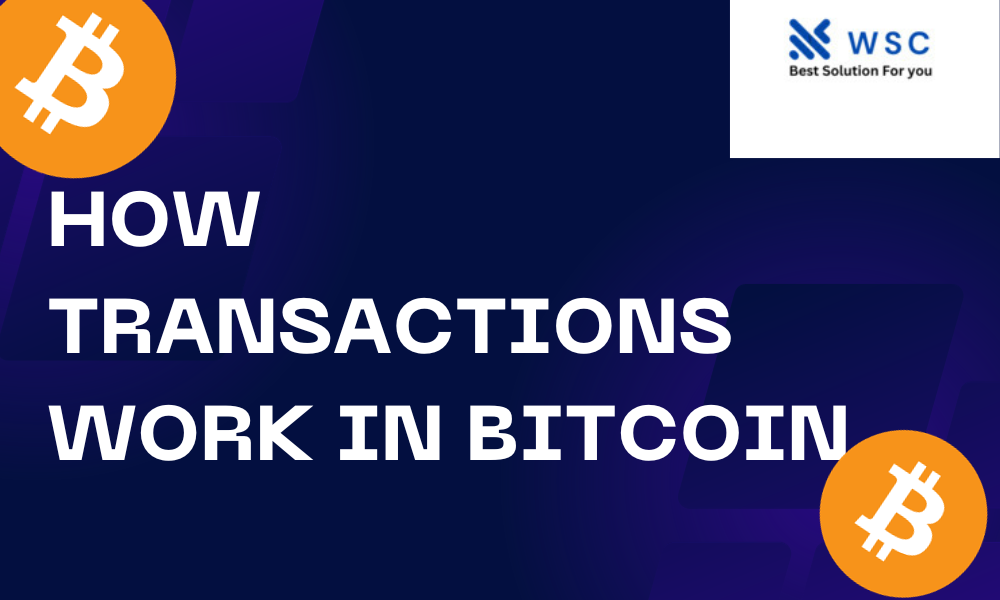Introduction
Cryptocurrency, particularly Bitcoin, has revolutionized the financial landscape with its decentralized and secure nature. Understanding how transactions work in Bitcoin is crucial for anyone entering the world of digital currencies. This article will delve into the intricate process of Bitcoin transactions, providing you with a comprehensive guide on the inner workings of this groundbreaking technology.
What is Bitcoin?
h2. Decentralization and Security
Bitcoin, created in 2009 by an unknown person or group using the pseudonym Satoshi Nakamoto, operates on a decentralized network. This means that no single entity or government controls it. Instead, transactions are verified by network nodes through cryptography, ensuring transparency and security.
h2. Blockchain Technology
At the core of Bitcoin’s functionality is its blockchain. This decentralized ledger records all transactions across a network of computers. Each block in the chain contains a list of transactions, and once a block reaches a certain size, it is added to the chain. This process, known as mining, involves solving complex mathematical problems to validate transactions and create new blocks.
How Transactions Are Initiated
h2. Wallets: Your Digital Keyring
To engage in Bitcoin transactions, individuals need a digital wallet. A wallet is essentially a digital keyring that allows users to store their public and private keys, enabling them to send and receive Bitcoin. Wallets come in various forms, including software wallets, hardware wallets, and paper wallets, each offering a unique set of advantages.
h2. Public and Private Keys
When someone initiates a Bitcoin transaction, they use their wallet to sign it with their private key. The private key is a secret code known only to the owner, while the public key is a cryptographic address visible to others. These keys work together to facilitate secure and authentic transactions on the Bitcoin network.
The Transaction Process
h2. Input and Output
Bitcoin transactions consist of inputs and outputs. Inputs refer to the source of the funds, while outputs designate the destination. Each input must be spent entirely, and any excess funds return to the sender as “change” in a new output. This process ensures the integrity of the Bitcoin ledger and prevents double-spending.
h2. Transaction Verification
Once a user initiates a transaction, it is broadcasted to the network for verification. Miners, who play a crucial role in this process, collect transactions into blocks and compete to solve mathematical puzzles. The first miner to solve the puzzle adds the block to the blockchain, and in return, they are rewarded with newly created bitcoins—a process known as mining rewards.
Confirmations and Security
h2. Confirming Transactions
For added security, Bitcoin transactions require confirmations. Each block added to the blockchain represents one confirmation. The more confirmations a transaction has, the more secure and irreversible it becomes. While some merchants accept zero or one confirmation for small transactions, larger transactions may require multiple confirmations to mitigate the risk of double-spending.
h2. Security Measures
Bitcoin’s security extends beyond confirmations. Advanced cryptographic techniques, such as elliptic curve digital signatures, safeguard transactions. Additionally, the decentralized nature of the network makes it resistant to hacking, providing users with a level of security unmatched by traditional financial systems.
Conclusion
In conclusion, understanding how transactions work in Bitcoin is pivotal for anyone looking to navigate the world of cryptocurrency. From the decentralized nature of the blockchain to the importance of secure wallets and the intricacies of transaction verification, Bitcoin offers a unique and revolutionary approach to digital transactions. Embracing this technology opens up new possibilities and ensures a secure, transparent, and efficient financial future.
Check our tools website Word count
Check our tools website check More tutorial




